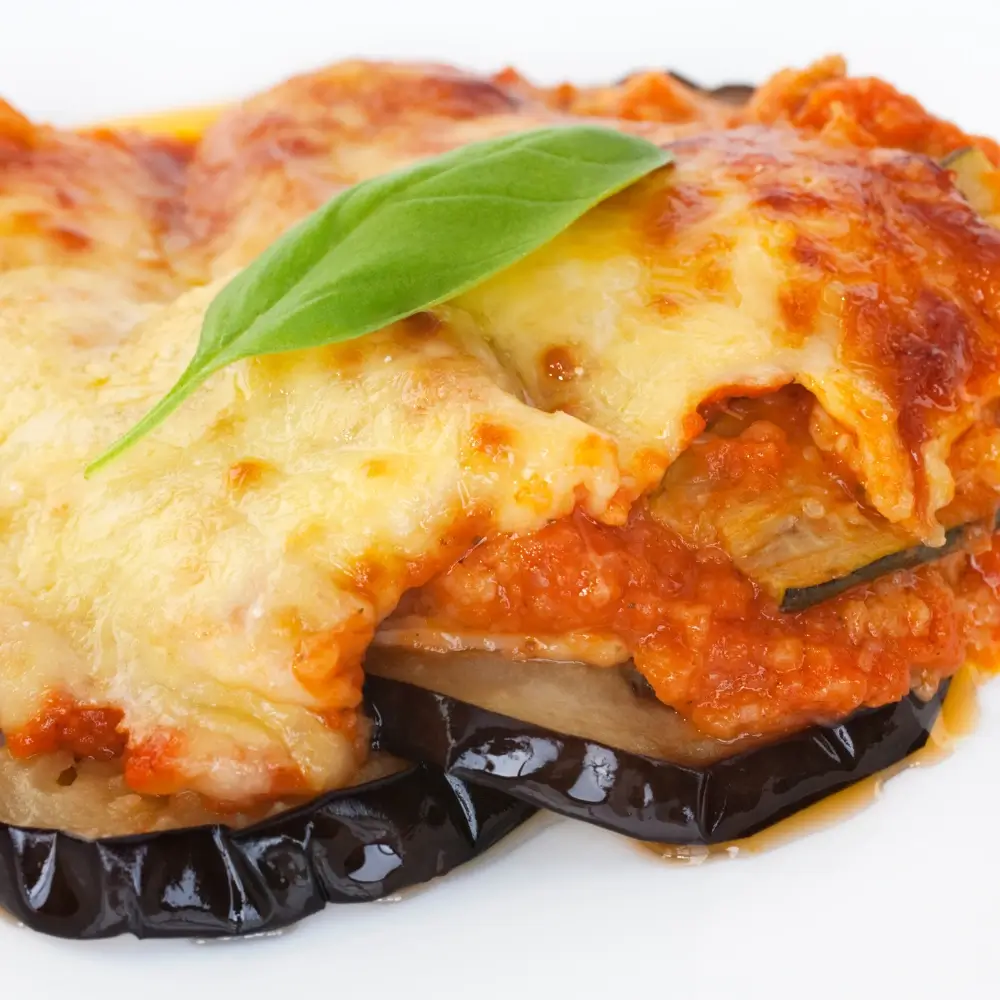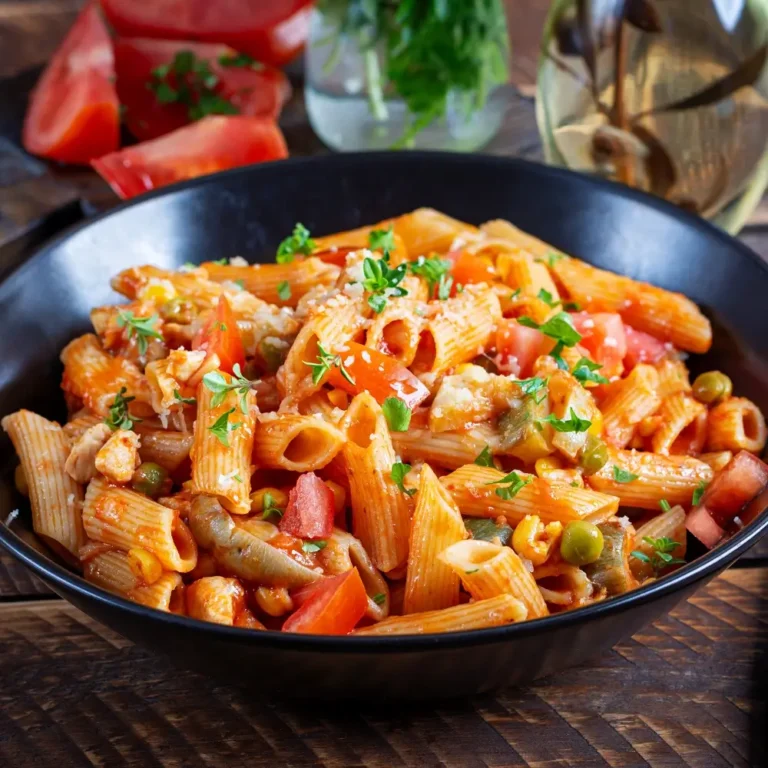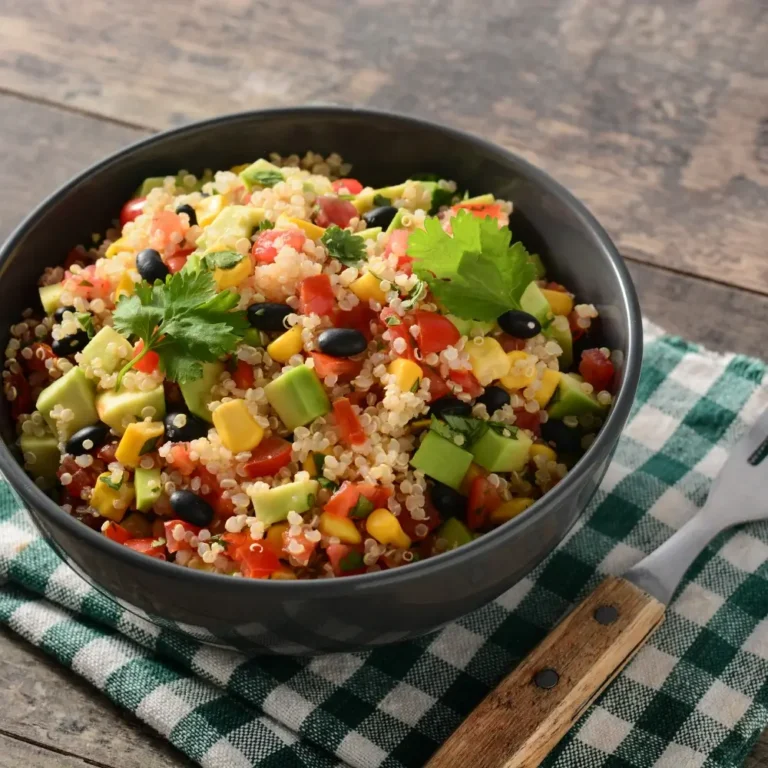Eggplant Parmesan Recipe
Presentation
What makes the perfect eggplant parmesan recipe? How can you bring Italy’s flavors to your table? You’ll learn to make the best eggplant parmesan for a comforting meal. This recipe is a classic Italian dish that’s a true comfort food.
This dish is rich in flavors and has a satisfying texture. It’s great for a weeknight dinner or a special event. You’ll find out the secrets to making the best eggplant parmesan. From choosing the right ingredients to layering it perfectly, you’ll get it all.
Key Takeaways
- Learn how to make a delicious homemade eggplant parmesan recipe
- Discover the secrets to selecting the right ingredients for the best eggplant parmesan recipe
- Understand the importance of layering the dish to perfection with an eggplant with parmesan recipe
- Get tips on how to make the perfect eggplant parmesan recipe for a weeknight dinner or special occasion
- Find out how to bring the flavors of Italy to your table with a classic comfort food dish and the best eggplant parmesan recipe
- Explore the rich flavors and satisfying texture of this comfort food delight and eggplant parmesan recipe
- Master the art of making the best eggplant parmesan recipe for your family and friends
Table of Contents
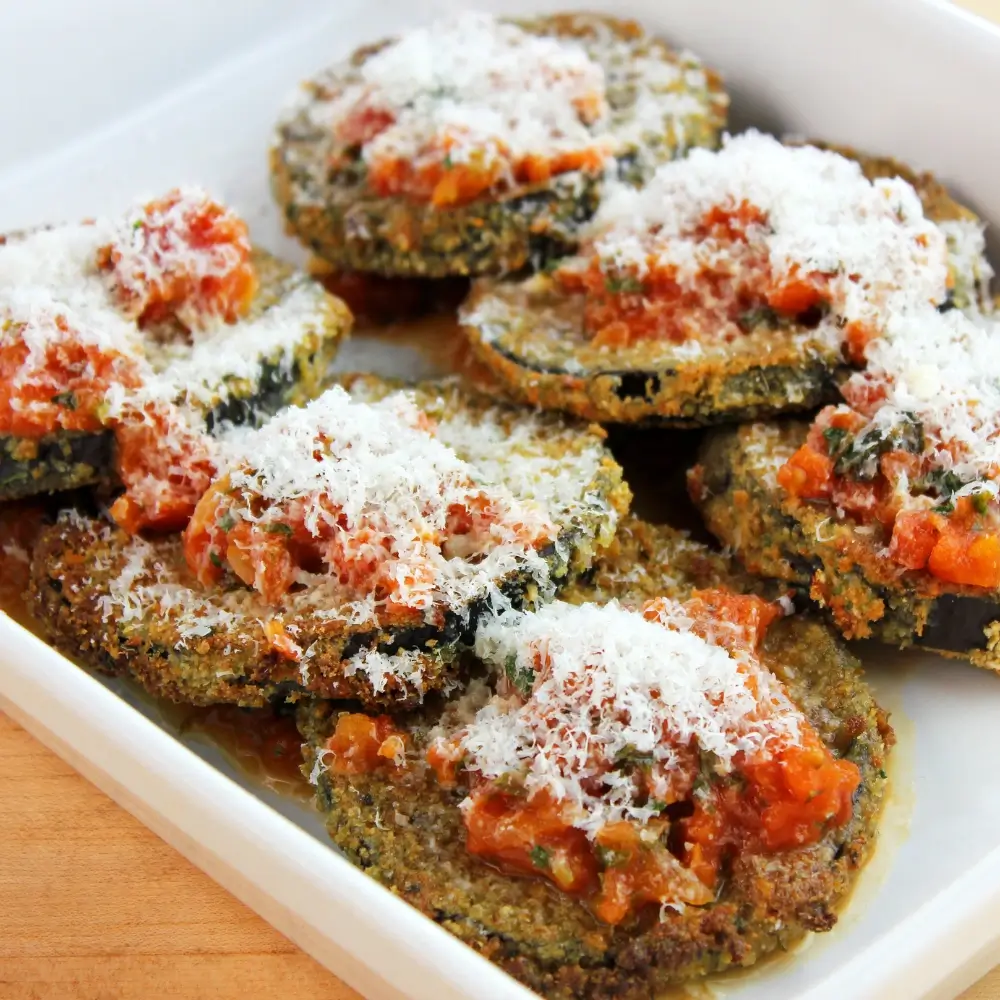
Introduction to Classic Eggplant Parmesan Recipe
Eggplant parmesan is a favorite Italian dish from the south. It comes in many forms, like eggplant parmesan without breading. This lighter version is perfect for those looking for a healthier option. Eggplant parmesan is a beloved dish in many Italian homes.
The dish has a rich history in Italian cuisine. Eggplant is a key ingredient in many Italian recipes. Over time, different regions have made their own versions of eggplant parmesan. Today, you can find it on menus worldwide, each with its own twist.
History of the Dish
Eggplant parmesan’s history is fascinating. It started in southern Italy, where eggplant is common. Italian immigrants took it to other parts of the world, sharing their love for the dish.
Why This Recipe Works
This eggplant parmesan recipe is a hit because of its perfect mix of flavors and textures. The eggplant’s crispy outside and soft inside pair well with the tomato sauce and melted mozzarella. It’s a favorite, whether you like it with or without breading.
What to Expect
When you make this eggplant parmesan, a few things happen. First, you prepare the eggplant slices by salting and sweating them. Then, you layer them with tomato sauce, cheese, and other ingredients. After baking, the dish comes out golden and delicious. You can enjoy a classic Italian dish at home, with or without breading.
| Eggplant Parmesan Variations | Description |
|---|---|
| Eggplant Parmesan with Breading | A classic version of the dish, with breaded and fried eggplant slices. |
| Eggplant Parmesan without Breading | A lighter version of the dish, with unbreaded eggplant slices. |
| Vegan Eggplant Parmesan | A plant-based version of the dish, with vegan cheese and other ingredients. |
Essential Equipment for Perfect Eggplant Parmesan
To make a delicious eggplant parmesan, you need the right tools. The right equipment helps you get a crispy outside and a soft inside. Choosing the right tools is key for great eggplant recipes.
Here are some essential equipment you’ll need for the perfect eggplant parmesan:
- A large frying pan with at least 2-3 inches of depth to fry the eggplant slices
- A baking dish to layer the eggplant parmesan recipe
- A utensil set, including a spatula, tongs, and a fork, to handle the eggplant slices
- A cheese grater to grate the mozzarella and parmesan cheese
Using the right equipment makes cooking easier and more efficient. A large frying pan lets you fry many eggplant slices at once. A baking dish helps you layer the parmesan evenly. With the right tools, making eggplant parmesan becomes a breeze.
| Equipment | Description |
|---|---|
| Frying Pan | Large pan with at least 2-3 inches of depth |
| Baking Dish | Rectangular dish to layer the eggplant parmesan recipe |
| Utensil Set | Includes spatula, tongs, and fork to handle eggplant slices |
With the right equipment, you’re ready to make a tasty eggplant parmesan. Choose durable, easy-to-clean tools. Don’t be afraid to try different recipes to find your favorite.
Selecting the Best Ingredients
To make a delicious eggplant parmesan recipe, you need to pick the best ingredients. The quality of these ingredients is key to a tasty dish. For an eggplant parmesan cheese recipe, the type of cheese and eggplant used can greatly impact the taste.
Choosing the Right Eggplants
For a baked eggplant parmesan recipe, choose eggplants that are firm and heavy. Look for eggplants with a deep purple color and a glossy look. Avoid eggplants with soft spots or bruises, as they can taste bitter.
Cheese Selection Guide
A great eggplant parmesan recipe uses a mix of cheeses. Mozzarella adds a creamy texture, while parmesan brings a salty, nutty flavor. Ricotta cheese balances the flavors and adds a light, airy texture.
Sauce Components
A homemade tomato sauce is vital for a great eggplant parmesan recipe. Use canned tomatoes labeled “san marzano” or “pomodoro” for the best taste. Adding fresh basil, oregano, and garlic will give the sauce a bright, fresh taste.
Breadcrumb Options
For a crispy exterior, the right breadcrumbs are essential. Panko breadcrumbs are a good choice, as they are light and airy. You can also use regular breadcrumbs or gluten-free breadcrumbs for a healthier option.
Preparation and Salt-Sweating Process
To make a delicious eggplant parmesan recipe, preparation is key. You want to ensure that your eggplant is ready for the breading and frying process. The salt-sweating process is a critical step in preparing eggplant for eggplant parmesan recipe easy. It involves slicing the eggplant into thin rounds, sprinkling both sides with salt, and letting it sit for about 30 minutes.
This step is essential for achieving a crispy exterior and a tender interior. The salt-sweating process helps to remove excess moisture from the eggplant. This makes it easier to get a crispy coating.
Here are some tips to keep in mind during the preparation and salt-sweating process:
- Use a mandoline or sharp knife to slice the eggplant into thin rounds.
- Sprinkle both sides of the eggplant slices with salt, making sure to cover the entire surface.
- Let the eggplant slices sit for at least 30 minutes to allow the salt to draw out excess moisture.
- Rinse the eggplant slices with cold water to remove excess salt and pat them dry with paper towels.
By following these steps, you’ll be able to create a delicious eggplant parmesan recipe. It’s sure to please even the pickiest eaters. Remember to stay tuned for the next section, where we’ll dive into the process of creating the perfect breading station for your eggplant parmesan recipe.
Creating the Perfect Breading Station
To make a delicious eggplant parmesan, you need a well-organized breading station. This station is key for the perfect breading. It helps you get a crispy, golden-brown exterior, essential for great eggplant parmesan.
The breading station is where the magic happens in eggplant recipes. You’ll need flour, eggs, and breadcrumbs. Here are some tips to help you create the perfect breading station:
- Use a shallow dish for the flour to prevent it from spilling over.
- Beat the eggs gently to create a smooth egg wash.
- Choose the right type of breadcrumbs for your eggplant parmesan recipe – panko breadcrumbs work well for a lighter coating.
By following these tips, you’ll be able to create a breading station that will help you make the perfect eggplant parmesan recipe every time. Whether you’re making eggplant parmesan without breading or with a thick, crispy coating, a well-organized breading station is essential for achieving great results.
| Breading Component | Tips and Variations |
|---|---|
| Flour | Use a shallow dish and choose a light, all-purpose flour. |
| Eggs | Beat the eggs gently and use a fork to create a smooth egg wash. |
| Breadcrumbs | Choose panko breadcrumbs for a lighter coating or regular breadcrumbs for a thicker coating. |
Step-by-Step Frying Instructions
To get a crispy outside and a soft inside in your eggplant parmesan, follow these steps. Frying the eggplant slices is key to making Eggplant Parmesan. It makes the dish taste better and feel more satisfying.
Here are some tips for frying eggplant slices:
- Choose the right oil: Pick an oil that doesn’t burn easily, like olive or avocado oil. This helps the eggplant not soak up too much oil.
- Heat control: Keep the heat medium-high to get a nice golden-brown crust on the eggplant.
- Don’t overcrowd: Fry the eggplant slices in batches. This lets them cook evenly without sticking together.
By following these tips and using a good eggplant parmesan recipe, you’ll make a tasty dish. Whether you’re trying a new recipe or an easy one, the secret to success is in the frying.
| Oil Temperature | Frying Time | Result |
|---|---|---|
| 350°F | 3-4 minutes | Golden-brown crust |
| 325°F | 5-6 minutes | Crispy exterior, tender interior |
Remember, getting better at frying eggplant takes practice. Don’t worry if it doesn’t turn out right the first time. With more tries, you’ll get the hang of it and make a delicious eggplant parmesan that everyone will love.
Making the Signature Tomato Sauce
To make a great eggplant parmesan, you need a tasty tomato sauce. This sauce is key to Eggplant Parmesan’s flavor. You can use fresh or canned tomatoes. Fresh tomatoes give a bright taste, while canned tomatoes are richer.
Here are some tips for the perfect tomato sauce:
- Choose high-quality tomatoes, fresh or canned, for the best taste.
- Balance the tomatoes’ acidity with salt and olive oil.
- Add herbs and spices like basil, oregano, and bay leaves for depth.
Getting the sauce right means paying attention to cooking time and consistency. Aim for a sauce that’s thick but flows well. Simmer it for 30 minutes, stirring now and then, and adjust the seasoning. Follow these steps for a delicious tomato sauce for your eggplant parmesan.
| Ingredient | Quantity | Notes |
|---|---|---|
| Tomatoes | 2 cups | Fresh or canned, crushed or diced |
| Onion | 1 medium | Chopped, sautéed until translucent |
| Garlic | 3 cloves | Minced, sautéed until fragrant |
| Herbs and spices | to taste | Basil, oregano, bay leaves, salt, and pepper |
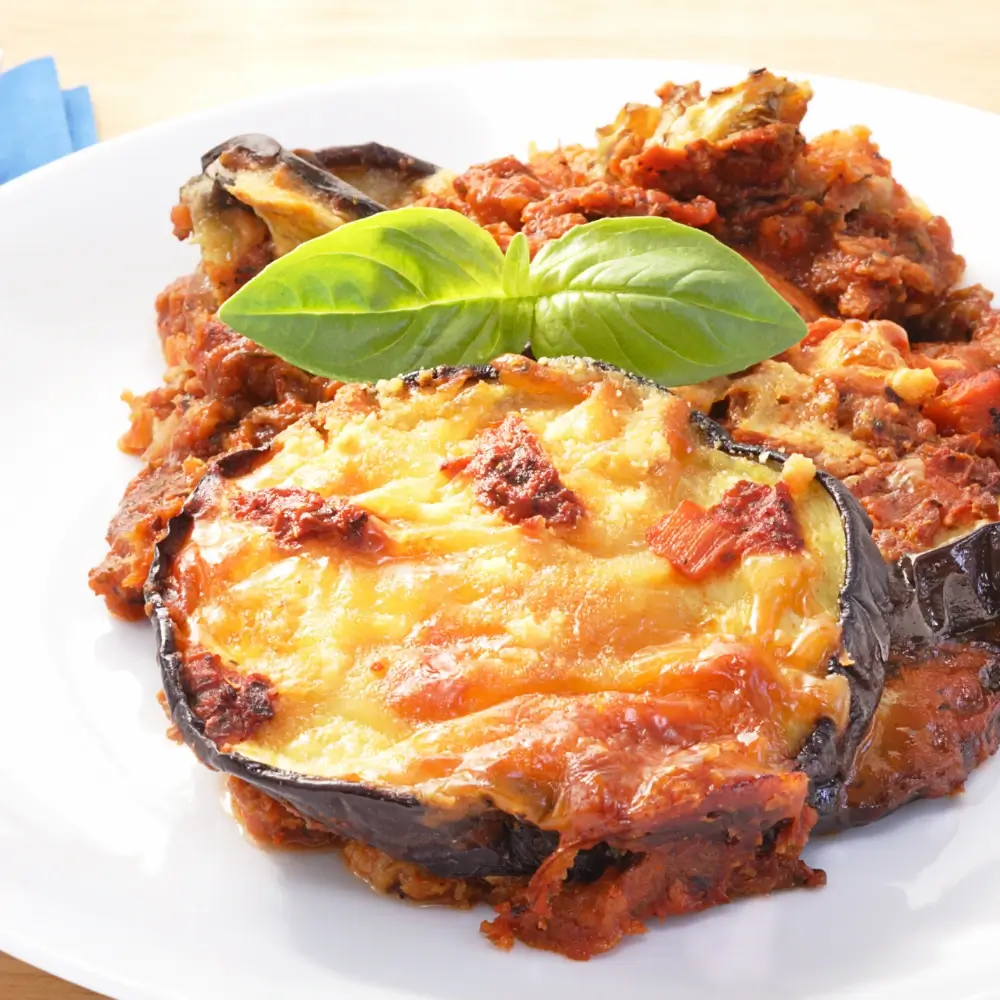
Layering Techniques for Best Results
To make the perfect eggplant parmesan, mastering layering is key. You need to balance eggplant slices, tomato sauce, and cheese. Each part should add its own texture and flavor for a great taste.
Start with tomato sauce at the bottom, then add eggplant slices. Next, sprinkle cheese like mozzarella or parmesan for extra flavor. Omitting breading makes the dish lighter and more straightforward.
Here are some layering tips for eggplant parmesan:
- Use a variety of cheeses to add depth and complexity to the dish
- Don’t overlayer the eggplant, as this can make the dish too heavy and soggy
- Experiment with different types of tomato sauce to find the one that works best for you
Follow these tips and practice your layering. Soon, you’ll make a delicious eggplant parmesan that will wow everyone.
Baking Temperature and Timing Guide
To get a perfectly baked eggplant parmesan, knowing the right temperature and timing is key. When you’re making an easy eggplant parmesan, you want the eggplant to be soft and the cheese to be golden. Here are some easy tips for baking.
The baking process is what makes eggplant recipes great. You can use a regular oven or a convection oven. For a regular oven, heat it to 375°F (190°C) and bake for 25-30 minutes. The cheese should be melted and bubbly. For a convection oven, lower the heat to 350°F (180°C) and bake for 20-25 minutes.
Conventional Oven Methods
- Preheat the oven to 375°F (190°C)
- Bake for 25-30 minutes, or until the cheese is melted and bubbly
- Check the eggplant parmesan recipe every 10 minutes to ensure it’s not overcooking
Convection Adjustments
- Reduce the temperature to 350°F (180°C)
- Bake for 20-25 minutes, or until the cheese is melted and bubbly
- Keep an eye on the eggplant parmesan recipe to prevent overcooking
By following these easy steps, you’ll make a delicious eggplant parmesan that everyone will love. Always use fresh ingredients and don’t overcook the eggplant. It should be soft and not tough or bitter. With a bit of practice, you’ll be a pro at making eggplant parmesan!
Healthier Alternatives and Variations
Want to make your eggplant parmesan recipe healthier? You can do it without losing flavor. Try a baked eggplant parmesan recipe for a tasty twist. It uses less oil than the traditional version.
Here are some healthier options to consider:
- Use whole wheat breadcrumbs instead of regular ones.
- Choose low-fat cheese for your eggplant parmesan cheese recipe.
- Add more veggies like spinach or bell peppers to boost nutrition.
If you have dietary restrictions, there are gluten-free and dairy-free versions of eggplant parmesan. Use gluten-free breadcrumbs and dairy-free cheese to make it accessible to all. You can pick from many baked or traditional eggplant parmesan recipes.
With a bit of creativity, you can make a healthier eggplant parmesan recipe. It will be just as tasty as the original. So, why not try making some delicious variations?
Common Problems and Solutions
When making eggplant parmesan, you might run into some common issues. These can affect how your dish turns out. To make sure your eggplant parmesan is tasty, it’s key to know how to fix these problems. One big issue is soggy breading. This can be fixed by using the right breading method and ingredients.
Another problem is overcooked eggplant. You can avoid this by keeping an eye on the cooking time and temperature. Using a simple eggplant parmesan recipe can also help you avoid mistakes. Here are some tips to fix common problems:
- Use fresh and high-quality ingredients for the best flavor and texture.
- Follow the recipe carefully to avoid overcooking or undercooking the eggplant.
- Don’t overcrowd the baking dish, as this can cause the eggplant to steam instead of brown.
By following these tips and using a good eggplant parmesan recipe, you can make a delicious dish. Remember, making eggplant parmesan can be tricky at first. But with practice, you’ll get better at it.
With a little practice and patience, you’ll be able to create an eggplant parmesan recipe that’s truly delicious and impressive. Don’t be afraid to experiment and try new things – it’s all part of the cooking process!
Make-Ahead and Storage Tips
Making ahead and storing the eggplant parmesan recipe can save you time. You can prepare it in advance and keep it in the fridge or freezer. This is great for serving a tasty dish to your family or guests without spending hours in the kitchen.
To make ahead, prepare the eggplant slices, cheese mix, and tomato sauce separately. Store them in airtight containers. Then, layer them in a baking dish and bake until golden. You can also prepare the whole dish ahead and refrigerate or freeze it until baking time.
Freezing Instructions
- Prepare the eggplant parmesan recipe as instructed, but do not bake.
- Let the dish cool completely, then cover it with plastic wrap or aluminum foil.
- Label and date the dish, and store it in the freezer for up to 3 months.
Reheating Methods
To reheat a frozen eggplant parmesan, thaw it overnight in the fridge. Then, bake it in a preheated oven at 350°F (180°C) for 25-30 minutes. It should be hot and bubbly. You can also reheat it in the microwave, but watch out not to overheat. This can make the cheese tough and rubbery.
Perfect Side Dish Pairings
When serving eggplant parmesan, you want the right side dishes. Eggplant parmesan without breading is versatile. It lets you try different sides to find the best match.
Think about Italian favorites like garlic bread or a green salad. These are simple to make and loved by many. For something more filling, try roasted veggies, sautéed spinach, or grilled asparagus. The goal is to mix flavors and textures for a great meal.
Here are some great side dish choices for eggplant parmesan:
- Garlic bread: a classic Italian staple that is easy to make and always a crowd-pleaser
- Green salad: a light and refreshing option that helps cut the richness of the eggplant parmesan
- Roasted vegetables: roasted vegetables like zucchini, bell peppers, or broccoli add a nice contrast in texture and flavor
- Sautéed spinach: quickly cooked with garlic and lemon, sautéed spinach makes a delicious and healthy side dish
Choosing the right sides can make your eggplant parmesan even better. Whether it’s without breading or with, the key is balance. With these options, you’ll create a meal that everyone will enjoy.
Nutritional Information and Benefits
Eggplant parmesan is a nutritious and healthy dish when made right. It’s easy to make and fits well in a balanced diet. With about 300-400 calories per serving, it’s a guilt-free choice for a tasty meal.
Eggplant is packed with health benefits. When you mix it with other ingredients in eggplant parmesan, it boosts your health. Some key benefits include:
- Rich in antioxidants and fiber
- Good source of vitamins and minerals
- Can help lower cholesterol and blood pressure
Adding eggplant recipes to your diet can make meals more varied and nutritious. The eggplant parmesan recipe is a tasty and healthy option. It’s easy to make and can be tailored to your liking.
| Nutrient | Amount per serving |
|---|---|
| Calories | 350 |
| Protein | 20g |
| Fat | 15g |
| Carbohydrates | 30g |
By tweaking the traditional eggplant parmesan recipe, you can make it healthier. Use whole-wheat breadcrumbs, cut down on cheese, and add extra veggies. This will boost the nutritional value of your dish.
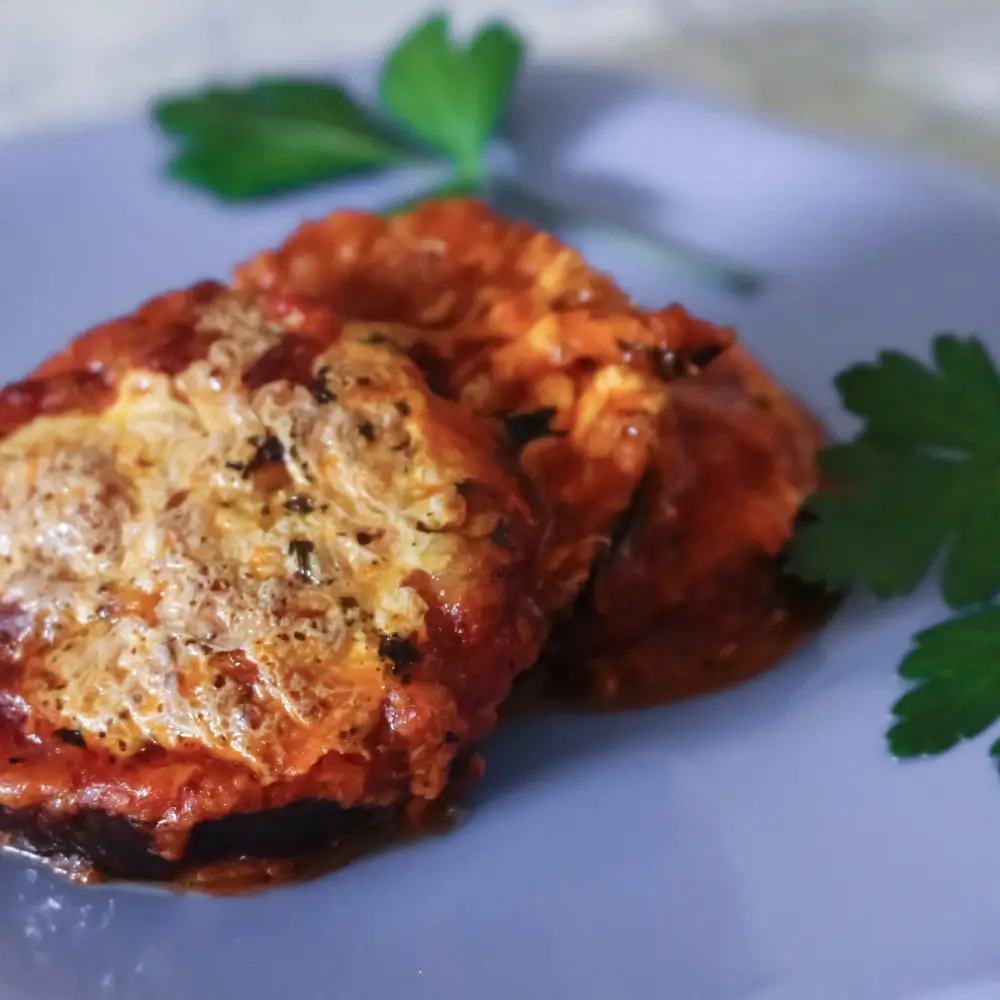
Serving Suggestions and Presentation
When serving your eggplant parmesan, make it look good and tasty. You’ve worked hard on your recipe, so show it off. Slice the dish into thick rounds or squares for easy serving and a nice look.
Choose the right dishes and utensils for a better presentation. A large, shallow dish is perfect for eggplant parmesan. Add fresh basil or parmesan cheese for color and freshness. Here are some ideas:
- Serving with garlic bread or a green salad
- Offering marinara or ranch dressing for dipping
- Creating a build-your-own eggplant parmesan bar
These tips can make your eggplant parmesan a hit. Whether it’s a classic or baked version, presentation matters. So, get creative and have fun!
Expert Tips for Restaurant-Quality Results
To get restaurant-quality eggplant parmesan, focus on details and technique. With practice, you can make it taste and look like a pro’s dish. Use fresh eggplants, quality cheese, and rich tomato sauce.
For great eggplant parmesan, choose the right eggplants. Look for firm, heavy ones with deep purple color. Prepare your breading station with flour, eggs, and breadcrumbs. Fry the eggplant slices until they’re golden and crispy.
Here are more tips for top-notch results:
- Use a mix of mozzarella and parmesan cheese for flavor.
- Add breadcrumbs on top of the cheese for crunch.
- Bake in a hot oven until the cheese is melted and bubbly.
Follow these tips and a reliable recipe to impress your loved ones. Soon, you’ll be making eggplant parmesan like a pro. Enjoy the delicious flavors of this Italian classic.
Conclusion
Making the perfect eggplant parmesan recipe needs focus, patience, and a spirit to try new things. By picking the best eggplant parmesan cheese recipe ingredients, learning how to bread and fry, and layering carefully, you can make a dish as good as a restaurant’s. This is all possible in your own kitchen.
Success comes from practicing regularly and always trying to get better. Feel free to try new things, mix flavors in new ways, and make the recipe your own. With each try, you’ll learn more and love making eggplant parmesan even more.
So, enjoy the process, relish the tasty results, and feel proud of making a homemade eggplant parmesan. Your family and friends will love it and remember it for a long time.
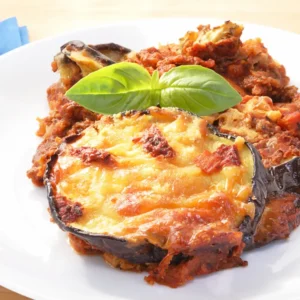
Eggplant Parmesan Recipe
Ingredients
- 2 large eggplants, sliced into 1/4-inch rounds
- 1 teaspoon salt
- 1 cup all-purpose flour
- 2 large eggs, beaten
- 1 ½ cups breadcrumbs
- 1 teaspoon Italian seasoning
- ½ teaspoon garlic powder
- 2 cups marinara sauce
- 2 cups shredded mozzarella cheese
- ½ cup grated Parmesan cheese
- ¼ cup fresh basil leaves, chopped
- ¼ cup olive oil (for frying)
Instructions
- Sprinkle the eggplant slices with salt and let them sit for 20 minutes to draw out moisture. Pat dry with paper towels.
- Preheat your oven to 375°F (190°C) and grease a baking dish.
- Coat each eggplant slice in flour, dip in beaten eggs, and then coat with a mixture of breadcrumbs, Italian seasoning, and garlic powder.
- Heat olive oil in a large skillet over medium heat and fry the breaded eggplant slices until golden on both sides. Drain on paper towels.
- Spread a thin layer of marinara sauce in the baking dish. Layer half of the fried eggplant slices, followed by marinara sauce, mozzarella, and Parmesan. Repeat the layers.
- Bake in the preheated oven for 25-30 minutes, or until bubbly and the cheese is melted.
- Garnish with fresh basil and serve hot. Enjoy your Eggplant Parmesan!
FAQ:
Do you leave the skin on eggplant for eggplant Parmesan?
In an Eggplant Parmesan Recipe, you can leave the skin on for added texture and nutrients, but peeling it makes the dish softer and more tender.
What is the difference between eggplant Parmesan and Eggplant Parmigiana?
An Eggplant Parmesan Recipe and Eggplant Parmigiana are essentially the same dish, but “Parmigiana” is the traditional Italian name for it.
What are the ingredients in eggplant Parmesan?
A classic Eggplant Parmesan Recipe includes eggplant, marinara sauce, mozzarella, Parmesan cheese, breadcrumbs, eggs, and seasoning.
Why do you soak eggplant in water before cooking?
In an Eggplant Parmesan Recipe, soaking eggplant in water helps reduce bitterness and makes it absorb less oil when fried.
Should I salt eggplant before making eggplant Parmesan?
Salting eggplant in an Eggplant Parmesan Recipe draws out excess moisture, preventing sogginess and enhancing the flavor.
Why is my eggplant Parmesan soggy?
An Eggplant Parmesan Recipe can turn soggy if the eggplant isn’t properly salted, drained, or if too much sauce is used before baking.
